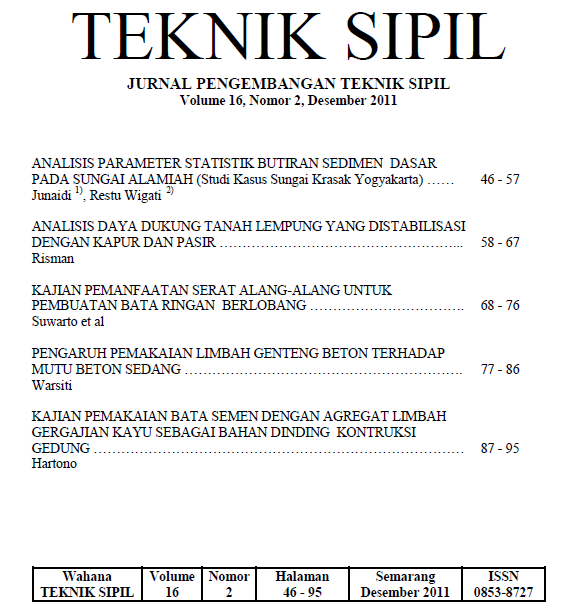Kajian Pemakaian Bata Semen Dengan Agregat Limbah Gergajian Kayu Sebagai Bahan Dinding Kontruksi Gedung
DOI:
https://doi.org/10.32497/wahanats.v16i2.106Keywords:
Waste of sawn timber, wall materials, cement bricksAbstract
Waste of sawn wood powder came from different parts of the sawmill industry, because they were abundant, giving rise to pollution that interferes with the surrounding environment, if there is no need usually discarded / burned so just.For waste of sawn wood powder can be used as a substitute for fine aggregate or sand mixed with a certain ratio of cement to be utilized as building materials as brick cement.Product obtained in the laboratory experimental illustration of the identification of variations in the change ratio of the mixture, powdered cement and sawn timber, with comparisons based on the volume value of the maximum compressive strength of masonry cement mix 1 pc : 2 the sawn wood powder able to achieve 101.2 kg/cm2 > 100 kg/cm2 compressive strength of the solid red brick is allowed (SII-0021-78). Analysis of the ability of the compressive strength of cement bricks for construction of building walls, cement brick with a mixture of 1 pc : 7 parts sawdust powder according to the SII-0021-78, including the type of solid brick class 25 kg/cm2 compressive could reach 25.55. So cement bricks can be used for building construction which carry a maximum load of 25 kg/cm2 with a compressive strength of the lighter weight of the bricks in the market.
Downloads
Published
Issue
Section
License
Authors who publish with this journal agree to the following terms:Authors retain copyright and grant the journal right of first publication with the work simultaneously licensed under a Creative Commons Attribution License that allows others to share the work with an acknowledgement of the work's authorship and initial publication in this journal.
Authors are able to enter into separate, additional contractual arrangements for the non-exclusive distribution of the journal's published version of the work (e.g., post it to an institutional repository or publish it in a book), with an acknowledgement of its initial publication in this journal.
Authors are permitted and encouraged to post their work online (e.g., in institutional repositories or on their website) prior to and during the submission process, as it can lead to productive exchanges, as well as earlier and greater citation of published work (See The Effect of Open Access).






